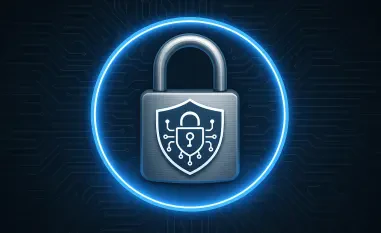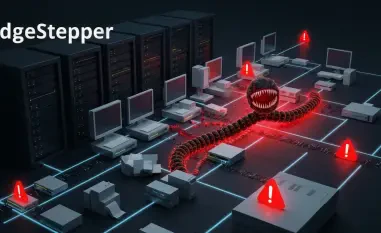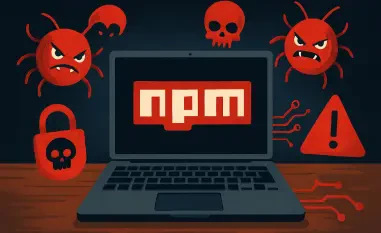In an era where cyber threats are evolving with unprecedented sophistication, Darktrace has emerged as a leader in detecting and combating these menaces. By focusing on anomaly-based threat detection, Darktrace has pioneered innovative methods to identify and analyze ransomware threats, particularly through the lens of SocGholish malware. This spotlight on SocGholish underscores its pivotal role in contemporary ransomware operations, highlighting its influence as a potent cybercrime tool. SocGholish, a malware loader notorious for its cunning, facilitates network breaches that pave the way for ransomware deployment. It serves as a gateway for more advanced threats, amplifying the complexity and efficiency of ransomware attacks. This exploration into Darktrace’s methodologies and SocGholish’s significance offers a comprehensive view of the current cyber threat landscape and the strategic measures required to counter these ever-looming dangers.
The Role of SocGholish Malware
The inception and evolution of SocGholish malware have charted a concerning trajectory in cybercrime since its debut in 2017. Initially emerging as a deceptive tactic, SocGholish preyed on vulnerabilities in outdated or compromised CMS-based websites to infiltrate networks. Its persistent functionality as a loader makes it an ideal conduit for introducing more complex threats into targeted systems. Exploiting the unsuspecting nature of internet users, SocGholish leverages fake browser update prompts to persuade individuals into downloading malicious software, thereby cementing its initial foothold within networks. Over time, SocGholish has demonstrated remarkable adaptability, transitioning seamlessly into delivering threats such as Cobalt Strike beacons and, more recently, RansomHub ransomware. This capability underscores its dynamic integration within the broader ecosystem of cyber threats. The persistent evolution of SocGholish reveals a calculated strategy to remain at the forefront of cybersecurity challenges, continually adapting to emerging vulnerabilities and defensive techniques.
SocGholish’s modus operandi is a testament to its sophistication and technological prowess. By embedding itself into websites via malicious JavaScript, it capitalizes on web traffic to spread its influence. Once a user visits an infected site, they are typically redirected to a fraudulent browser update page designed to appear legitimate. Here, they are tricked into downloading a malicious ZIP file containing a JavaScript loader, unwittingly allowing SocGholish to bridge its access to their device. This transition from deception to infiltration is seamless, further amplified by SocGholish’s integration with well-known threats like Cobalt Strike—a penetration testing tool commonly repurposed for malicious intent. In its quest to enhance cyber threat leverage, SocGholish has recently been associated with RansomHub ransomware, showcasing its ability to adapt and evolve in delivering threats. This synergy between SocGholish and other malware underscores a broader shift towards complex, coordinated cyberattacks that challenge traditional defenses, necessitating advanced detection and response strategies.
Modular Ransomware Operations
The landscape of ransomware operations has been fundamentally transformed by a modular, compartmentalized approach that facilitates efficiency and evasion across the attack lifecycle. This structure emphasizes the importance of collaboration among distinct roles, each contributing to a specific phase of an operation. Initial access brokers, malware loaders like SocGholish, and post-exploitation operators function as specialized units, each adept in their respective roles within the attack cycle. This division of labor not only streamlines operations but also enhances resilience by allowing each component to operate independently while maintaining overall cohesiveness. The ability to compartmentalize efforts effectively ensures that detection is evaded and impacts are maximized, marking a significant evolution in modern cybercriminal strategies.
Case studies and examples illustrate how ransomware groups capitalize on these specialized roles, particularly during the initial stages of intrusion. SocGholish acts as a cornerstone in this process, serving as a critical component that grants initial access to networks. By acting as a sophisticated malware loader, SocGholish bridges the gap between low-profile infiltration and high-impact ransomware attacks. This tactic exemplifies how threat actors harness its capabilities, using it to silently gain access and then passing control to ransomware affiliates who carry out further exploitation. Such collaborations underscore the strategic coordination between malware operators and various factions within cybercriminal networks, facilitating a seamless transition from infiltration to execution. As ransomware groups continue to refine this modular approach, it becomes increasingly essential for cybersecurity measures to adapt and address these emerging challenges with robust detection and response strategies that can counteract these sophisticated, compartmentalized threats.
Threat Actor Tactics
In the aftermath of deploying SocGholish, threat actors utilize a range of strategies to solidify their presence and execute planned ransomware attacks. Following initial access, these actors employ a suite of post-infiltration tactics designed to expand their foothold within compromised networks. Credential access remains a focal point, with attackers exploiting legacy protocols such as WebDAV to achieve this end. By initiating forced authentication processes, threat actors engage in attempts to retrieve NTLM hashes, a critical step in cracking credentials and securing further access to target systems. This maneuver exploits older, often overlooked protocols to infiltrate deeper into the network infrastructure, highlighting the need for comprehensive security updates across these enduring vulnerabilities.
Additionally, lateral movement within compromised networks is facilitated through the strategic use of Shell Command Files (SCF). By planting SCF files across accessible network shares, attackers can trigger inadvertent authentication processes by users merely navigating to affected folders. This tactic leverages inherent protocol behaviors to initiate contact, creating opportunities for threat actors to expand their influence without direct confrontation. The broader implications of these methods underscore a shift towards exploiting passive internal exposures, significantly enhancing threat actors’ ability to exfiltrate data and assert deeper control within compromised networks. In light of these developments, organizations are compelled to scrutinize not only their external-facing defenses but also the internal dynamics of their infrastructure, ensuring resilient safeguards against such exploitative tactics that capitalize on credibility and user interaction.
Infection Chains and Persistence
The infection chain perpetuated by SocGholish begins innocuously, often through seemingly legitimate browser update notifications. Users who fall prey to these deceptions unknowingly initiate a download, typically a malicious ZIP file harboring a JavaScript loader. This loader not only facilitates the dissemination of further malicious components but also establishes a communication link with Traffic Distribution Systems (TDS) such as Keitaro. These systems serve as distribution hubs for malicious payloads, directing traffic from infected devices to designated command-and-control servers, thereby perpetuating the infiltration cycle. The utilization of TDS like Keitaro reflects a broader strategy to extend the reach of malware dissemination, leveraging their infrastructure to sustain infection flow and enhance impact across numerous targets.
Persistence mechanisms employed by SocGholish-infected devices are indicative of its dual-purpose design, serving roles in both initial penetration and sustained access. Post-infection, compromised devices have been observed to initiate connections that suggest Python-based backdoors are at play, underpinning efforts to maintain an enduring foothold in the network. These connections are pivotal, permitting threat actors to continue exerting control long after the initial breach. The integration of such persistence strategies into the malware’s framework reflects an elevated understanding of network dynamics, with threat actors leveraging these methods to secure continued exploitation and data extraction from target systems. Consequently, a comprehensive defense approach, accounting for both entry and persistence, becomes critical in mitigating the enduring challenge posed by such evolving cyber threats.
Defense Evasion and Challenges
The increasingly sophisticated arsenal of defense evasion tactics employed by threat actors post-compromise poses significant challenges to traditional detection efforts. Command-and-control (C2) communications are a particular focal point, with actors employing techniques such as TLS/SSL encryption to shroud their activities from prying eyes. By encrypting their communications, threat actors obfuscate the content, complicating efforts by security systems to intercept and interpret malicious instructions. Moreover, the employment of port-hopping tactics—frequently switching among ephemeral ports—enables attackers to bypass static port monitoring and evade detection. This constant cycling challenges conventional monitoring infrastructures, underscoring the necessity for more adaptable and dynamic defense postures attuned to these evolving evasion methods.
In light of these challenges, the call for adaptive security strategies becomes increasingly pressing. Organizations must continually innovate and evolve their defense systems to stay ahead of these sophisticated tactics, emphasizing the importance of advanced threat intelligence and real-time monitoring. Proactive approaches, incorporating machine learning and artificial intelligence, present an opportunity to anticipate and counter these evasive maneuvers effectively. By adopting a mindset that embraces change and anticipates adversarial adaptation, cybersecurity frameworks can potentially disrupt the clandestine operations of threat actors, mitigating the impacts of their elusive tactics and fortifying network defenses against future threats.
Recent Ransomware Campaigns
Since its introduction in 2017, the SocGholish malware has established itself as a formidable force in the realm of cybercrime. Initially, it took advantage of vulnerabilities in outdated or compromised CMS-based websites to gain entry into networks. SocGholish functions primarily as a loader, making it an efficient tool for deploying more sophisticated cyber threats into compromised systems. Exploiting the unsuspecting nature of internet users, it uses deceptive browser update alerts to coax individuals into downloading malware, securing its initial presence within networks. Over the years, SocGholish has shown exceptional adaptability, advancing from delivering Cobalt Strike beacons to more recent threats such as RansomHub ransomware. This evolution highlights its strategic role within the broader landscape of cyber threats, continually adjusting to new vulnerabilities and defensive measures.
The operation of SocGholish demonstrates its technological sophistication. It infiltrates websites through malicious JavaScript, using web traffic to expand its reach. Visitors to an infected site are commonly redirected to a deceptive browser update page, appearing legitimate. Users are tricked into downloading a harmful ZIP file with a JavaScript loader, unknowingly allowing SocGholish access to their devices. This seamless transition from deception to infiltration is further enhanced by its integration with recognized threats like Cobalt Strike—a tool often misused for malicious purposes. Its recent connection to RansomHub ransomware showcases its ability to evolve, emphasizing the complex nature of modern cyberattacks that demand advanced detection and response strategies.













